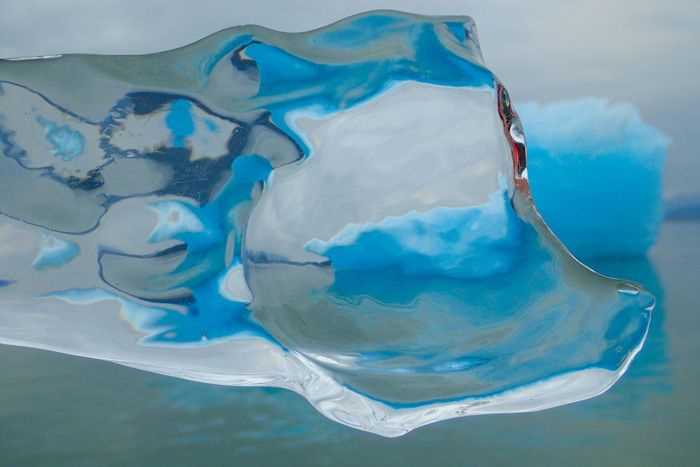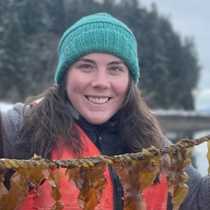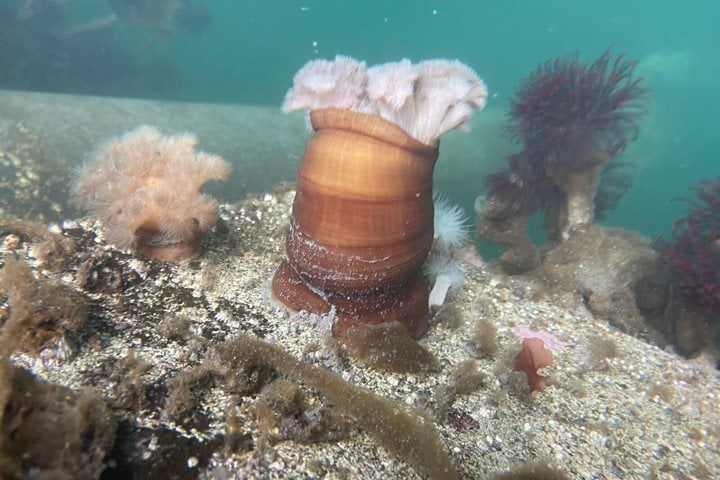The morning dawned calm and placid. National Geographic Quest quietly motored south through glassy waters towards Le Conte Bay. Icebergs grounded high on a rocky bar marked the terminal moraine of the southernmost glacier in the northern hemisphere. The Le Conte glacier is one of the most active and fast moving glaciers in the world; this river of ice moves downhill at nearly 90 feet a day. Despite its downward momentum the glacier is still retreating, calving off over 90 feet of the face of the glacier a day. This creates an abundance of giant icebergs.
The distant bergs drew us out on Zodiacs to tour these natural glass monuments. Icebergs the size of houses run aground on the low tide dwarfed our boats. Brilliant blues, opaque whites, and slivers of crystalline ice created fantastical shapes as we circled the bergs. In their oblique forms we found fantastical sights; a laughing duck now becomes a diving mermaid after shifting our perspective. Harbor seals spared us curious glances between searches for the perfect haul-out. Diving birds disappeared below the mirror-flat surface in search of a tasty breakfast.
We returned aboard for brunch and hauled anchor to move northward to Petersburg. A century ago, fishing communities once peppered the Inside Passage. Few active fishing towns remain, and Petersburg is Southeast Alaska’s largest. The Norwegian flags hanging from flagpoles and the gables bearing the intricately painted floral rosemaling speak to town’s celebrated Scandinavian heritage. A full fishing fleet calls Petersburg home. We walked the docks to see commercial fishing in action; large purse seiners sat poised to cast off at the next salmon opening, tenders passed in and out of town running loads of fish back to the processors and supplies out to the fishermen, and empty slips waited for the return of the trollers and gillnetters already out on the fishing grounds catching the first of the salmon runs.
A short Zodiac ride across the Wrangell Narrows we ventured onto Kupreanof Island in search of our first muskeg. A muskeg, or peat bog, is a common but unique ecosystem in Southeast Alaska. The bogs are formed by impermeable layer of clay or rock beneath the soil, preventing water from adequately draining, and creating an extremely challenging environment for plants and animals. Plants that call the muskeg home have adapted themselves in curious ways to survive. Slowly growing pines twist and contort upwards, sustained by sparse needles and carnivorous sundews, luring insects with their saccharine drops. The hot, dry summer Southeast Alaska has experienced seemed to draw all the water from the bog, but by simply stepping off the boardwalk onto the thick peat moss showed just how much moisture held just below the crunchy dry surface.
We left Petersburg while feasting on locally caught Dungeness crab while the sun turned red as it dipped into the hazy horizon above jagged mountains. We head north throughout the night to our next adventure, dreaming of whales and wildlife to come







